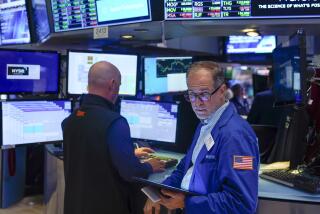How to Match Your Values to an Investment
- Share via
Think you want to put your money where your values are?
The toughest part of so-called social investing has always been finding the companies and funds that have values that match yours. But this process is easier now thanks to resources available on the World Wide Web.
For instance, at https://www.socialinvest.org, the Social Investment Forum, a Washington-based nonprofit group, provides information about what social investing means and where you can go to find investments that suit your needs.
This site concentrates on mutual funds that screen out investments in certain types of companies.
If the environment is your primary concern, you’d want to make sure you don’t invest in companies that are major polluters or destroyers of the rain forest or the ozone layer. If you’re interested in social equity issues, you’d want to avoid companies linked to sweat shops. Hate war? Several funds won’t invest in defense contractors. There are also screens to avoid companies that do animal testing and funds that avoid “sin” stocks--those that make or promote alcohol, tobacco and gambling.
If you click on “Mutual Fund Screens Chart” at the Social Investment Forum’s home page, you’ll flip to a page that lists screened funds by investment category--such as domestic and international stocks, bonds or balanced funds. Next to each fund listing, the chart notes which of seven common social screens--environment, labor/employment, products/services, defense/weapons, “sins,” animal testing and human rights/equality issues--that fund uses.
This listing also shows minimum investments and toll-free phone numbers for the funds.
The chart doesn’t provide enough detail on the funds’ philosophies to make it one-stop-shopping. However, it gives investors the ability to winnow their possibilities before researching further.
A second chart helps investors ferret out the best performers among socially screened funds. This alphabetical listing tells when the funds were started and how much they hold in assets and provides their average annual performance based on one-year, three-year, five-year, 10-year and since-inception time periods.
The chart also indicates whether the funds have a “load”--an upfront fee charged as a percentage of the amount invested--and lists the funds’ annual expense ratios.
Naturally, serious investors will want to know more--such as year-by-year performance, information about the fund managers and fund risk profiles. But, in most cases, that information is a click away. The site offers hot links to the home pages of the vast majority of funds listed.
What if you’re not wired to the Web? A low-tech guide called the National Green Pages lists 2,000 socially and environmentally screened businesses, including banks, mutual funds and financial planners. It costs $7.95, including shipping and handling. The guide can be ordered through the Washington-based nonprofit group Co-op America at (800) 58-GREEN ([800] 584-7336). Its address is 1612 K St., N.W., No. 600, Washington, DC 20006.
More to Read
Inside the business of entertainment
The Wide Shot brings you news, analysis and insights on everything from streaming wars to production — and what it all means for the future.
You may occasionally receive promotional content from the Los Angeles Times.










